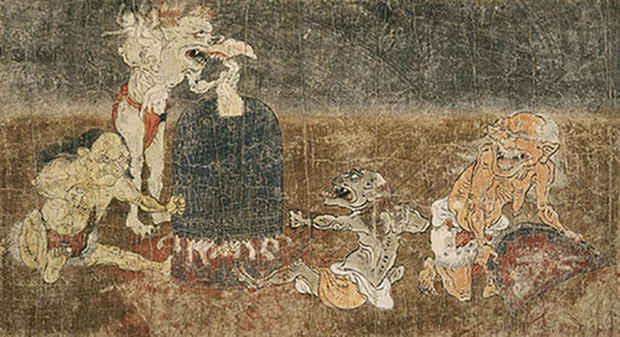Millennial Memorial Exhibition: Imagining the Afterlife - Hell and Paradise Envisioned by the Buddhist Prelate Genshin
Nara National Museum

This event has ended.
The famous monk Genshin (942-1017) was born and raised in Taima, Nara (present-day Taima area in Katsuragi City in Nara Prefecture). Active during the mid-Heian period, he eventually became a high-ranking Buddhist prelate, known as Eshin Sōzu. As a boy, he studied on Hieizan, the mountain northeast of Kyoto where Enryaku-ji, the head temple of the Tendai branch of Japanese Buddhism is located. He became a Tendai monk, living in the Yokawa section of the temple complex and devoting himself to spiritual training. One of Genshin’s most celebrated accomplishments was promoting faith in the Pure Land, the belief that the Amida Buddha (Skt. Amitābha) will appear before the faithful in their final movements and lead them to rebirth in his Pure Land Paradise (Jpn. Gokuraku Jōdo). It is also said that Genshin was responsible for creating the iconography of Amida in welcoming descent (raigō) and the dramatic re-enactments of Amida’s advent performed in the ceremonial Mukaekō.
Perhaps Genshin’s most remarkable achievement was to provide concrete images of the afterlife that would face people in the degenerate age of Final Stage of the Dharma (Mappō). His descriptions are found in his Ōjōyōshū (Essentials of Rebirth), written in 985 (Kanna 1). Based on vast body of knowledge gleaned from various Buddhist scriptures, this work vividly depicts the worlds of Buddhist hells and paradise in detail. Thereafter, this imagery engendered the artistic representation of this faith. Genshin’s writings and activities also had a great impact on believers in the Pure Land faith in later times.
This exhibition, inspired by the memorial of the 1000 anniversary of the death Genshin in 2016, has been designed as a special exhibition in Nara, the place of his birth, in order to allow visitors to trace the history of the period in which Genshin lived, learn of his influence on later generations and see the Buddhist art related to those beliefs at a single venue. Visitors have the opportunity to experience visions of the afterlife as portrayed one thousand years ago and to imagine themselves following in the footsteps of this famous monk.
Media
Schedule
from 7月 15, 2017 at 9:30 to 9月 03, 2017 at 17:00